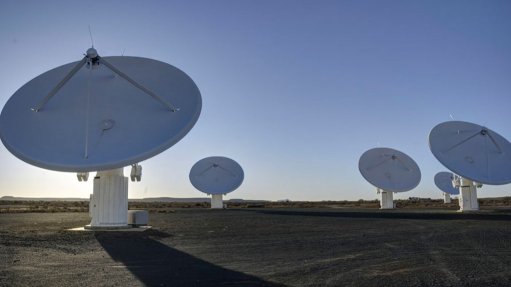
A view of part of the KAT-7 array
Photo by: SKA SA
The agency responsible for South Africa’s hosting of and contribution to the international Square Kilometre Array (SKA) radio telescope, SKA South Africa (SKA SA), and the US National Radio Astronomy Observatory (NRAO) on Tuesday signed an agreement to extend their cooperation for another five years. (South Africa will house the major part of Phase 1 of the SKA, with the rest being set up in Australia.)
SKA SA is also responsible for the country’s KAT-7 radio telescope array and the MeerKAT radio telescope programme. The NRAO is the US agency responsible for cooperation with the international SKA Organisation, which oversees the SKA programme. (The NRAO is a supporter, but for budgetary reasons not yet a member, of the SKA project.)
“Radio astronomy in both countries will benefit from sharing expertise resulting from recent expansions and upgrades to several radio astronomy facilities in the USA and the construction of the KAT-7 and the MeerKAT in South Africa,” cited SKA SA director Dr Bernie Fanaroff. “Scientists in the US are keen to collaborate with South Africa in the construction of the MeerKAT telescope as a precursor to the SKA, because they recognise that the MeerKAT will be a world leading and very exciting telescope in its own right.”
The new agreement allows both institutions to pool their high-level project expertise and resources concerning the development and implementation of software, latest technology receiving systems and data processing and archiving. The two agencies will also have joint workshops and exchange staff and students. They also intend to set up joint research and development activities.
“The collaboration agreement renews long-standing ties between SKA SA and NRAO and comes at a time when a major push is required in algorithms, software and computing to support the new and upgraded facilities in the US and SA,” affirmed SKA SA GM science computing and innovation Dr Jasper Horrell. “We are talking here of cutting edge work in high performance computing and algorithms that is of great significance for radio astronomy worldwide.”